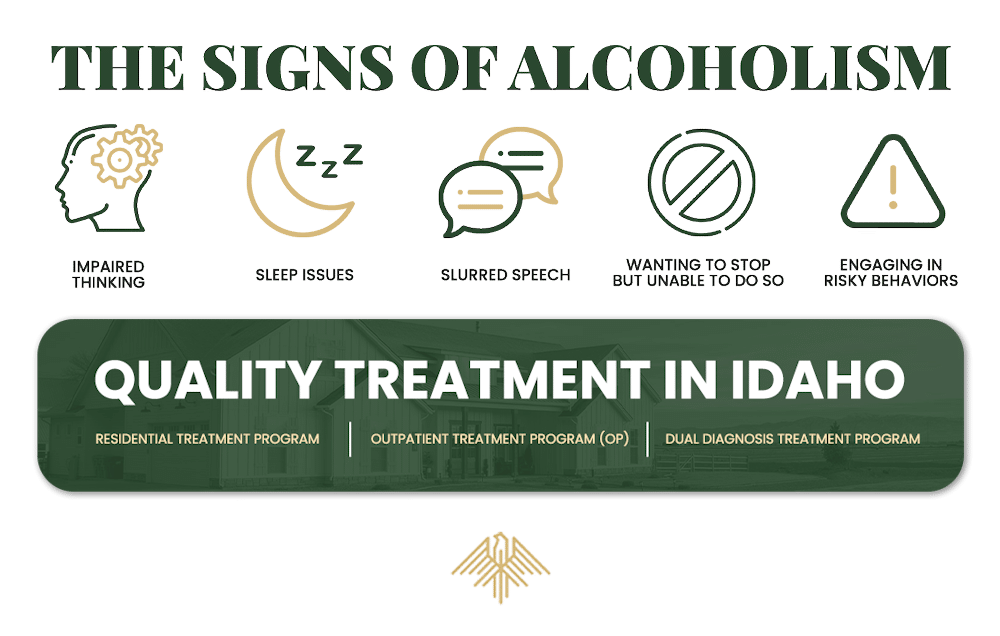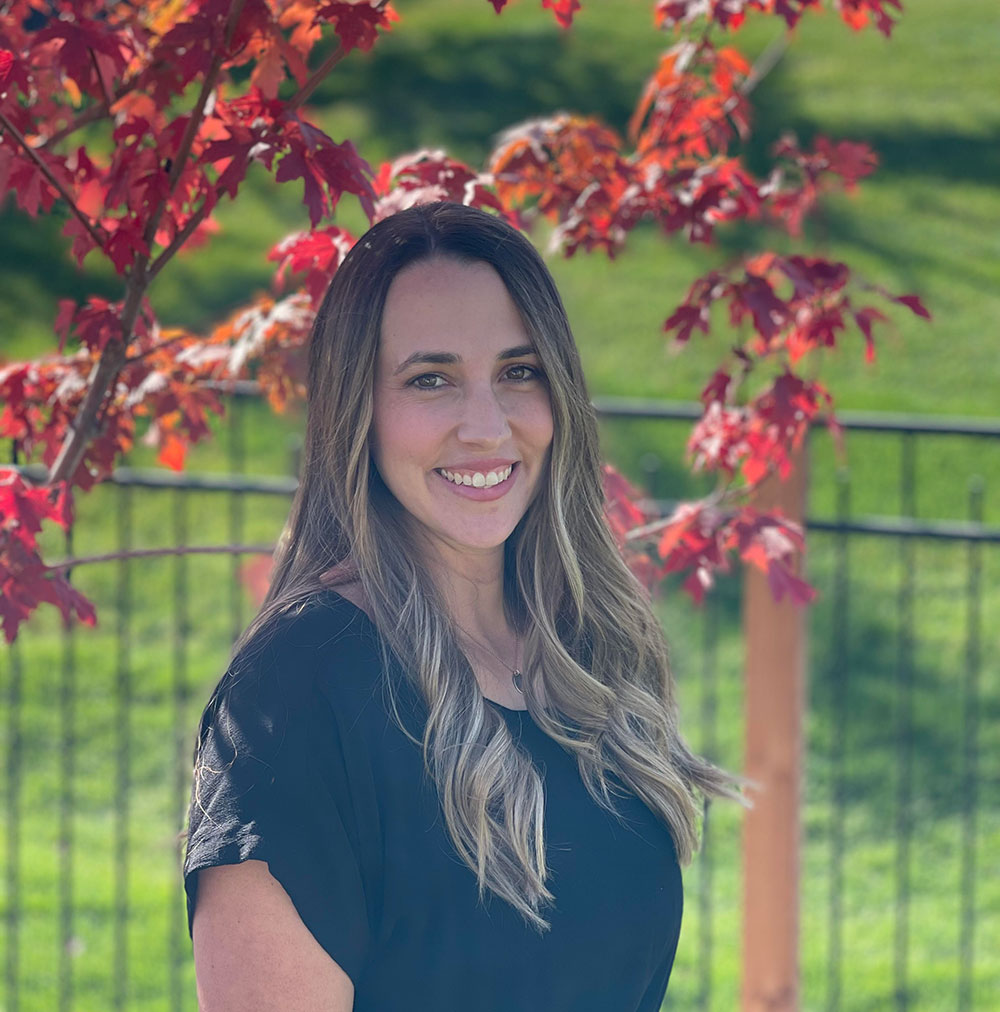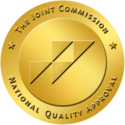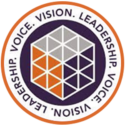Alcoholism Rehab Center in Idaho
Getting help at a drug and alcohol rehab center is often the only way for a person to break free from addiction. Many recovery centers in Idaho offer personalized treatment programs at varying intensities depending on the severity of an alcohol use disorder (AUD).
Many people who can’t control their drinking also don’t realize they have a problem. With a better understanding of the signs of alcohol abuse, you can help friends, family members, or even yourself in overcoming this issue and finding treatment options.
Learning about how to treat substance abuse with inpatient or outpatient rehab will prepare you for the recovery process at our alcohol rehab center in Idaho.
Drug and alcohol use is a prevalent issue in the U.S. People may drink alcohol for the following reasons:
- Escaping stress or problems – Alcohol slows down the central nervous system (CNS) and causes relaxing feelings. While alcohol can reduce stress and anxiety, it is temporary and leads to more problems.
- Peer pressure – Young people, especially, are susceptible to peer pressure. This can cause people to do things, like drink alcohol when they wouldn’t otherwise.
- Mental health issues – Alcohol can provide an escape from thoughts and feelings. However, this can worsen mental health disorders like anxiety and depression. Drinking alcohol can also lead to co-occurring disorders such as depression, bipolar disorder, and addiction.
- Accessibility – Alcohol is everywhere. It’s also a widely accepted activity. For this reason, many people ignore the risks and negative health effects.
- Environment – People at a bar or a party are more likely to drink alcohol because of the fun environment. However, people who grow up around alcohol and whose parents drank in the home are more likely to drink even when the experiences haven’t been positive.
Seeking help as soon as a problem is noticed can reduce the risk of alcohol use disorder.
Contact Eagle Creek Ranch
Recovery Today!
Why Wait? Find The Help You Need By Reaching Out To Us Today! Our Admissions Team Is Standing By.
WHAT IS ALCOHOL USE DISORDER?
Alcohol use disorder is also called AUD, addiction, and alcoholism. The National Institute on Alcohol Abuse and Alcoholism (NIAAA) describes alcohol use disorder as the inability to stop or control alcohol use despite the negative social, occupational, or health consequences.
WHAT ARE THE CAUSES OF AN ALCOHOL USE DISORDER (AUD)?
While the cause of AUD is unknown, it develops when a person drinks so much that it causes chemical changes in the brain. These changes increase the euphoric effects of alcohol. This increases the desire to drink despite the consequences.
Over time, these euphoric effects fade away, and a person drinks to prevent withdrawal symptoms. Some withdrawal symptoms can be unpleasant, and others can be dangerous.
Signs And Symptoms
People who drink excessively often don’t think they have a problem. This means friends and family must be aware of the signs and symptoms. Friends and family can significantly impact a loved one’s choice to attend rehab.
Some of the most common physical, behavioral, and psychological signs and symptoms of alcoholism include:
- Slurred speech
- Impaired thinking
- Repeating themselves
- Memory impairment
- Poor coordination
- Wanting to stop but unable to do so
- Alcohol is more important than work, school, and relationships
- Being secretive about alcohol use and its severity
- Engaging in risky behaviors like drinking and driving
- Being in denial about a drinking problem
- Distress at the thought of not having alcohol
- Sleep issues
- Developing co-occurring mental health disorders
A tell-tell sign a person struggles with alcohol use disorder is their nutritional health. People who abuse alcohol typically show signs of malnutrition, such as thinning hair, dark circles under their eyes, and a worn appearance.

Risk Factors for Alcohol Use Disorder (AUD)
Although there isn’t a known cause of alcoholism, there are risk factors that increase the risk of developing this disorder.

Risk factors include:
- Having more than 15 drinks a week for males and 12 drinks for females
- Binge drinking
- Having a parent or close family member with an alcohol use disorder
- Having a mental health disorder such as anxiety, depression, or schizophrenia
- Being a teen facing peer pressure
- Having low self-esteem
- High levels of stress
- Come from a family where alcohol use is common
Knowing the risk factors for alcohol use disorder can keep people aware of their drinking and minimize the risk of addiction.
HOW IS ALCOHOLISM DIAGNOSED?
To diagnose alcoholism, a person needs to meet the criteria in the DSM-5, which is published by the American Psychiatric Association (APS).
Besides having a pattern of alcohol consumption that causes significant impairment or distress, a person must have at least three of the following criteria in the past 12 months:
- Alcohol tolerance
- Withdrawal symptoms
- Drinking more than intended
- Unable to cut down or stop
- Time-consuming
- Isolation and withdraw
- Drinking despite consequences
- Missing work or school due to alcohol
- Cravings
- Dangerous activities while drinking
If a doctor or mental health professional diagnoses a person with an alcohol use disorder, they may also recommend mental health services and a place to receive treatment.
ALCOHOL ADDICTION TREATMENT
If you struggle with substance abuse there are treatment options. People who attend rehab for substance abuse treatment typically receive various types of therapy. Depending on the severity of AUD, they may need medication-assisted treatment (MAT).
Of the 32.6 million people who have an alcohol use disorder, only about 7.7% of people seek treatment, according to the National Association of Addiction Treatment Providers. This may be due to shame, denial, finances, family responsibilities, or stigma. If a person doesn’t seek help, it can cause health, career, and relationship issues.
Types of Substance Abuse Treatment Programs
Many rehab programs are continuum-of-care programs. This means you either step down or up, depending on your needs. Inpatient programs are effective for severe addiction, while someone with a mild addiction may start in an outpatient program.
The types of treatment programs include:
Mental Health Services for Addiction
Working with a therapist is a big part of treating substance use disorders. Substance abuse and mental health can be treated simultaneously to improve the recovery process. So it’s useful to search for a recovery center that has mental health services. During therapy sessions, you begin to understand your relationship with substance use and learn ways to cope without it. Various therapies can also help manage a co-occurring mental health disorder.
Treatment may also include group therapy and specialized therapy such as adventure therapy to help you cope with addiction symptoms.
Types of Behavioral Therapy
Types of behavioral therapy include:
- Cognitive behavioral therapy (CBT) – CBT teaches you to recognize and avoid situations where you may be tempted to drink alcohol, along with coping problems and behaviors that may lead to drinking
- Motivational interviewing therapy – Motivational therapy helps you build confidence and motivation to stop drinking
- Family therapy – Family therapy services help you become aware of the damage you caused to your family members, rebuilds a healthy family unit, and may prevent substance abuse in the younger generation.
Medication For Alcohol Use Disorder
The FDA has approved three medications for substance use disorder treatment centers. Many people reduce cravings and maintain their recovery with these prescription drugs. However, not everyone needs or benefits from these medications.
- Naltrexone – reduces alcohol cravings.
- Acamprosate – reduces post-acute withdrawal symptoms.
- Disulfiram – causes unpleasant symptoms like nausea, vomiting, and headache if you drink.
Medications work best when combined with psychotherapy, behavioral therapy, and a strong support system.
HOW LONG DOES DETOX TAKE?
Before entering a program, people typically go through detox. Withdrawal symptoms can be severe and sometimes life-threatening, but medical detox allows people to rid their bodies of toxins safely. Detoxing from alcohol in an inpatient rehab program with professional treatment is the safest way to handle your addiction. Detox can take anywhere from a few days to a week or more. The length of time will depend on a variety of issues, including:
- How long someone has been using drugs or alcohol
- The number and types of substances they’re abusing
- If they’re suffering from any co-occurring disorders (mental illness)
- If they have any other health issues that may affect or conflict with detox medications
- Other individual factors unique to the person (age, weight, gender, overall response to medication)
All of these factors contribute to how long medical detox will take. In most cases, though, people typically overcome detox in a week. In more extreme cases, it can take longer.
FINDING ADDICTION TREATMENT IN IDAHO
When you or a loved one is struggling with an alcohol use disorder, looking for rehab centers in Idaho can be overwhelming. When a medical professional gives a diagnosis, they typically provide recommendations for rehab centers.
However, it’s crucial to do your research and talk to the treatment center for more information. Rehab centers that are accredited offer evidence-based therapies and continuum-of-care programs to provide the best chance at lasting recovery.
How To Pay for Treatment Services
Eagle Creek Ranch Recovery accepts most insurance plans so you can afford treatment. This includes if you have private health insurance or Medicaid. Often, a treatment provider will accept major health insurance plans and Medicaid.
Contact Our Idaho Addiction Treatment Center Today!
It can be hard to get help for a loved one struggling with substance abuse or to find alcohol treatment programs for yourself. At Eagle Creek Ranch Recovery, we offer specialized treatment that includes addiction treatment and mental health care to support your recovery. Those suffering from substance abuse and mental health concerns can receive the support and guidance they need here at our facility.
If you or a loved one are seeking treatment for substance abuse disorder consider a recovery center that provides inpatient and outpatient programs as well as dual diagnosis. With the help of our team at Eagle Creek, you can overcome alcohol and drug addiction, make a positive change, and achieve long-term success. If you’re looking for additional treatment options, we also offer drug rehab for illicit drugs such as meth, heroin, opioids, and cocaine.
You don’t need to struggle with alcohol or drug use alone. Call us today to learn how we help rehabilitate and assist people in living a better life through recovery.

Clinical Director
Kendall Maloof is the clinical director at Eagle Creek Ranch Recovery. She is a licensed marriage and family therapist and has held multiple leadership roles before settling here at Eagle Creek. Kendall received her master’s degree in marriage and family therapy from the Chicago School of Professional Psychology in 2016. Her career in mental and behavioral health began in 2014 when she took up internships in both the nonprofit and for profit sectors. She interned at multiple reputable companies, such as The Living Success Center and 449 Recovery in California.
In 2019, Kendall became the clinical director of Sunsets Recovery for Woman, a dual diagnosis program in southern California. Kendall is a natural leader. She has an incredible ability to problem solve and stay calm in any situation. Kendall never fails to show up when she is needed, and her calm demeanor makes her team and clients feel at ease. Eagle Creek Ranch Recovery is proud to have Kendall as our clinical director.




